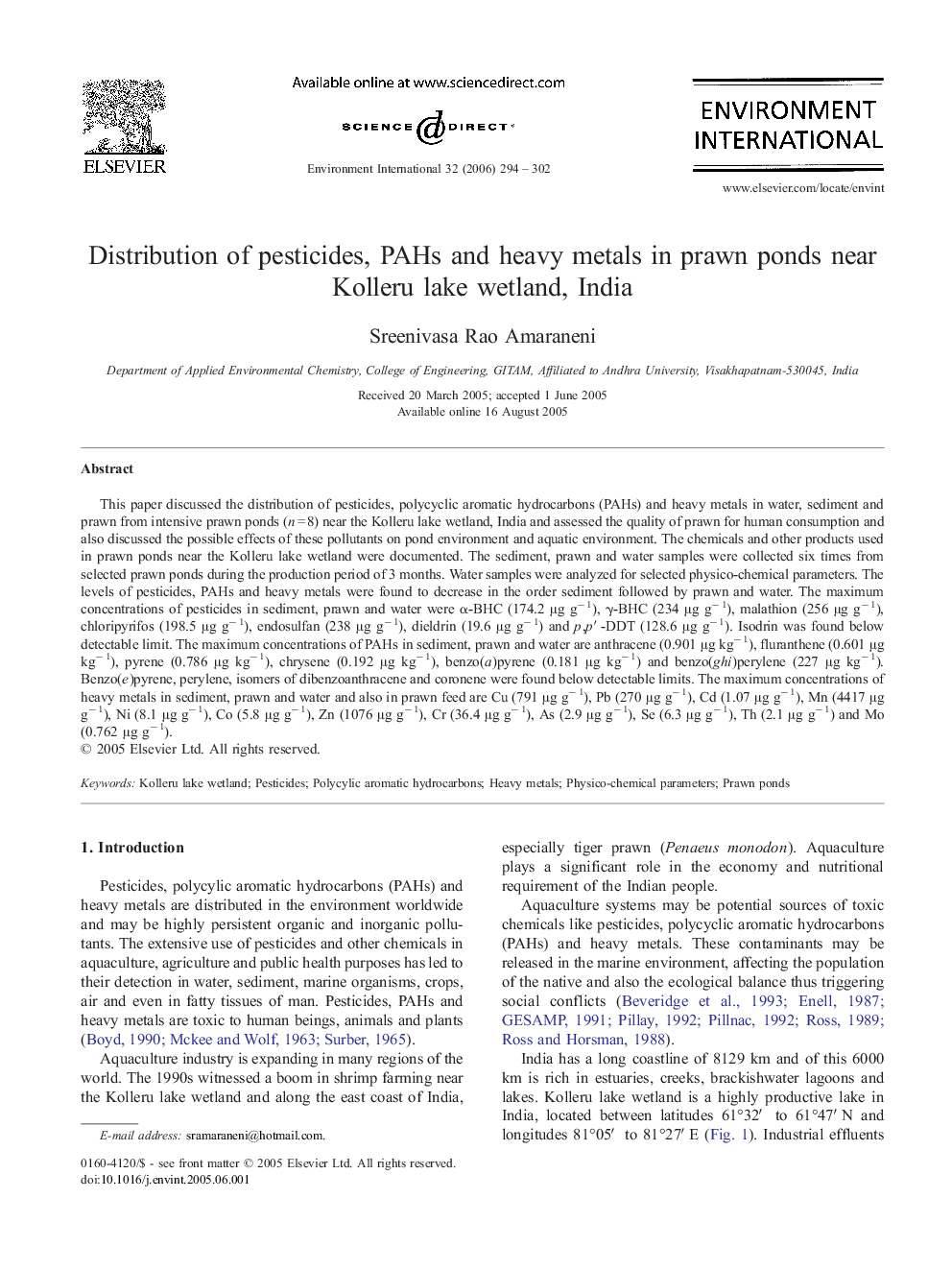| Article ID | Journal | Published Year | Pages | File Type |
|---|---|---|---|---|
| 4424045 | Environment International | 2006 | 9 Pages |
This paper discussed the distribution of pesticides, polycyclic aromatic hydrocarbons (PAHs) and heavy metals in water, sediment and prawn from intensive prawn ponds (n = 8) near the Kolleru lake wetland, India and assessed the quality of prawn for human consumption and also discussed the possible effects of these pollutants on pond environment and aquatic environment. The chemicals and other products used in prawn ponds near the Kolleru lake wetland were documented. The sediment, prawn and water samples were collected six times from selected prawn ponds during the production period of 3 months. Water samples were analyzed for selected physico-chemical parameters. The levels of pesticides, PAHs and heavy metals were found to decrease in the order sediment followed by prawn and water. The maximum concentrations of pesticides in sediment, prawn and water were α-BHC (174.2 μg g− 1), γ-BHC (234 μg g− 1), malathion (256 μg g− 1), chloripyrifos (198.5 μg g− 1), endosulfan (238 μg g− 1), dieldrin (19.6 μg g− 1) and p,p′-DDT (128.6 μg g− 1). Isodrin was found below detectable limit. The maximum concentrations of PAHs in sediment, prawn and water are anthracene (0.901 μg kg− 1), fluranthene (0.601 μg kg− 1), pyrene (0.786 μg kg− 1), chrysene (0.192 μg kg− 1), benzo(a)pyrene (0.181 μg kg− 1) and benzo(ghi)perylene (227 μg kg− 1). Benzo(e)pyrene, perylene, isomers of dibenzoanthracene and coronene were found below detectable limits. The maximum concentrations of heavy metals in sediment, prawn and water and also in prawn feed are Cu (791 μg g− 1), Pb (270 μg g− 1), Cd (1.07 μg g− 1), Mn (4417 μg g− 1), Ni (8.1 μg g− 1), Co (5.8 μg g− 1), Zn (1076 μg g− 1), Cr (36.4 μg g− 1), As (2.9 μg g− 1), Se (6.3 μg g− 1), Th (2.1 μg g− 1) and Mo (0.762 μg g− 1).
